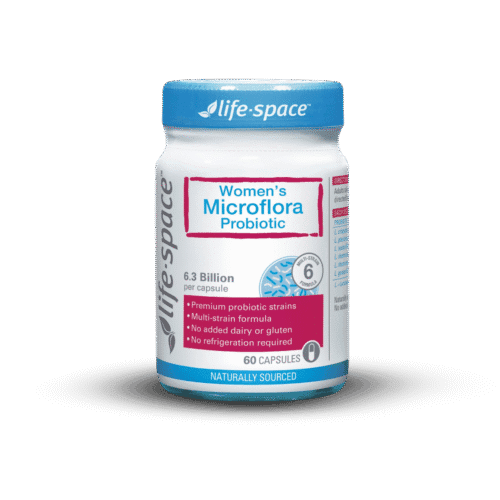You may have suffered for many years with symptoms of bacterial vaginosis (BV), so getting properly diagnosed is important. You may not have BV, and it’s important to know what you’re treating so you can choose the very best treatment for your body and microbiome.
Once you have a clear diagnosis, talk to your healthcare provider about your diagnosis and what tests were performed.
Always get a copy of your lab results after every visit for your records. Not all tests are created equal and if your BV doesn’t go away, you need to be able to investigate with another practitioner or on your own.
Why does BV occur?
In BV there is a loss of naturally beneficial vaginal bacteria, and disruptive bacteria have taken up residence.
Chronic BV can be difficult to treat, particularly if the testing is a culture or PCR test – you want a comrehensive NGS vaginal microbiome test to see everything in your vagina.
Order a comprehensive vaginal microbiome test online to get a thorough idea of your microbiome, so you can target treatment. Learn more about BV, how and why it occurs, and pair your microbiome test with your symptoms and choose the perfect treatment for your body with our effective treatment guide, Killing BV.

The most comprehensive vaginal microbiome test you can take at home, brought to you by world-leading vaginal microbiome scientists at Juno Bio.
The diagnosis for BV – three of these four signs and symptoms:
- Evenly coloured grey-white discharge on the vaginal walls (you may not be able to see this)
- ‘Clue cells’ on the wet-mount slide (wet mounted but performed in all countries as standard)
- Vaginal pH over 4.5 (G. vaginalis and other bacteria make the vagina less acidic, but the natural flora, Lactobacilli, make it acidic)
- Fishy or foul odour, which if not present by ordinary smelling by your doctor, is found by adding in potassium hydroxide to vaginal fluid, called the Whiff Test
- A test (culture, NGS or PCR) will likely be performed to determine the microbes present and the best treatment – but remember not all microbes are able to be cultured (grown in a petri dish) so opt for the more comprehensive NGS or at worst, a PCR test
Don’t wash away or overpower the bad bacteria before your tests – a false negative is bad!
Keep in mind that if you have been douching to get rid of the BV smell, you may have rinsed away many of the ‘clues’ your healthcare provider will use to diagnose you with BV. For correct diagnosis, don’t douche or use any treatments before your doctor’s visit. This guideline applies to STI testing too.
Antibiotics for BV may be ineffective
A doctor will most likely prescribe antibiotics for BV, usually metronidazole, since lactobacilli (protective vaginal bacteria) are resistant to this treatment (meaning, more of them survive). For many, antibiotics do work, at least at first. At three months, however, BV recurrence rates are very high, at around 50%.
You will likely be prescribed oral or vaginal (or both) antibiotics. Treatment may be a mixture of metronidazole oral tablets or gel, clindamycin cream, or tinidazole and clindamycin cream or pessaries (vaginal inserts).
If the antibiotic treatment doesn’t work, another round will probably be prescribed. Your doctor may do a range of tests, particularly for STIs, possibly allergies (condoms, etc.) and may do abdominal tests for pelvic inflammatory disease (PID).
Natural treatments for BV at home
Treating BV at home with our effective treatments is easy. Enrol in Killing BV Vagina Treatment Guide, and learn more about why you may have BV and how to treat it. We have been treating BV for over a decade and our specialist naturopaths are global leaders in vulvovaginal care and treating infections naturally.
Check your pH at home, and if your treatment doesn’t work, we recommend thorough testing and seeking alternative treatments such as those found in Killing BV.
Does my male partner need treatment?
Most older research says that male sexual partners do not need to be treated, however, this is not true – when male partnes are also treated, female partners respond better to treatments and recurrence rates drop by half.
Groundbreaking research1 from 2024 makes it clear that male partner treatment halves the recurrence rates of BV in female partners. This is incredibly important to know if you have regular sexual contact without a barrier method (condoms, dental dams) with a partner.
Male partners may not have symptoms, but can transmit the bacteria and biofilms to each and every vagina they touch. Penises can pass the infection back to the vagina very easily, and BV-causing bacteria has been found in urine and semen samples of men.
My Vagina has been treating men for BV for over a decade, with the only natural treatment protocol for men and people with penises available anywhere in the world, the Killing BV Penis Treatment Guide.

Get a fresh perspective with a qualified, experienced vulvovaginal specialist naturopath.
This product has multiple variants. The options may be chosen on the product page
The most comprehensive vaginal microbiome test you can take at home, brought to you by world-leading vaginal microbiome scientists at Juno Bio.

Promote and support a protective vaginal microbiome with tailored probiotic species.






